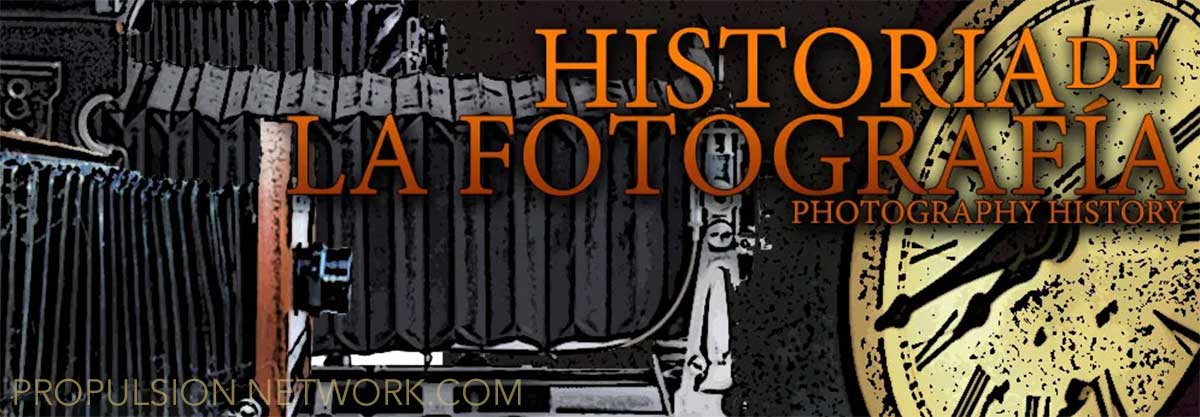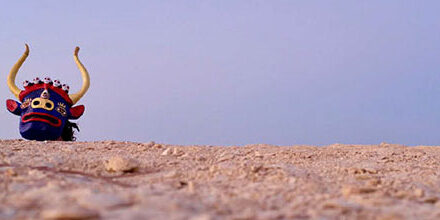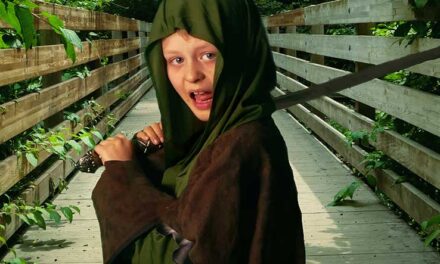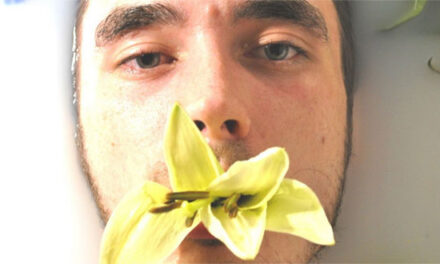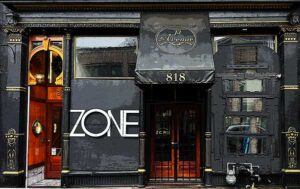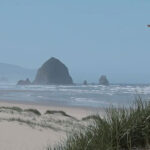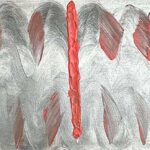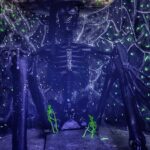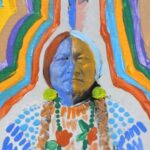What prompted the invention of the camera?
People are amazed when they find out that the camera is older than photography. The camera was invented many centuries before photography. In the form of the camera obscura, it projected a view of an out door scene into a darkened room, directing light rays from the scene through a small hole in one wall to form an image on the opposite wall. During the end of the 9th Century a number of Arabian scientist-philosophers were amusing themselves with camera obscuras made out of tents. the first references to the Arabian scientists are from Royer Bacon in the XIII century. Aristotele in 300 BC also used the camera oscura to study the eclipses. In the late l5th Century Leonardo Da Vinci described the “dark chamber” in knowledgeable detail.
1471-1528
Albrecht Durer applied the principles made by Alberti and Leonardo Da Vinci to give perspective and proportion to his drawings.
1568
Danielle Barbaro’s treatise, La practica della perspectiva, described how fitting a diaphragm to be biconvex lens allowed the amount of light passing through the lens to be controlled, enhancing depth-of field, the in front of and behind a focused subject in which detail appears sharp, and forming a sharper image.
1589
Neapolitan scientist and writer Giovanni Battista Della Porta became interested in camera obscuras toward the end of the l6th Century. He reacted as millions of amateurs have ever since: he got a camera of his own. He experimented with a lens to sharpen the image and then invited some of his friends in for a show. Seating them in the room, facing away from the aperture, he uncapped the lens. On the wall could be seen a group of actors hired to play a little drama outside. Della Porta’s guests, unhappily, were not amused by his motion picture show; the sight of tiny human forms cavorting upside down on a dark wall sent them into panic. Not long after, their host was brought before a Papal court on a charge of sorcery; he some how wriggled out of the trouble, but found it prudent to leave the country for a while.
By the end of the l7th Century camera obscuras were serving practical ends. They were made in the form of movable chambers and sedan chairs with a lens that could be moved in and out. they had a tube to focus the image, an adjustable aperture to control the amount of light entering the box. A mirror that cast the image right side up, onto a translucent screen on top so that it could be viewed from outside the box. That way artists could carry them around, get inside, and trace landscapes and cathedrals in accurate perspective, using translucent paper placed over a ground-glass viewing screen.
What inventions allowed photography become to become reality and who were the mayor inventors
In Germany, Jihann Heinischulze, a professor of the university of Altdorf, found by accident that silver nitrate darkened when the light touch it for long period of time.
1826
But it was not until 1826 that a French lithographer-inventor, Joseph Nicéphore Niépce, applied recent discoveries about light-sensitive compounds and finally supplied the missing element. Niépce coated a sheet of pewter with an asphalt solution, inserted it in an artist’s camera obscura . After an exposure of eight hours he succeeded in making the world’s first photograph: a dim, fuzzy image of his view of courtyard buildings in Southern Francefrom his window
1839 After some years of effort, Niépce joined forces with a Parisian scenery designer and impresario, Louis Jacques Mandé Daguerre. like Niépce, Daguerre did little to improve the camera, but he did find more sensitive chemicals. In 1839, after Niépce’s death, he announced the first practical photographic process to the world; his daguerreotypes, which took exposures of about half hour.
The Daguerreotype was the first successful photographic process, the discovery being announced on 7 January 1839. The process consisted of exposing copper plates to iodine, the fumes forming light-sensitive silver iodide. The plate would have to be used within an hour. Exposing to light – between 10 and 20 minutes, depending upon the light available. Developing the plate over mercury heated to 75 degrees Centigrade. This caused the mercury to amalgamate with the silver. fixing the image in a warm solution of common salt (later sodium sulphite was used.) rinsing the plate in hot distilled water. Daguerre’s choice of chemicals was such that the action of light left a milky white image or mercury amalgam. His first plates were 8 1/2″ by 6 1/2″ The quality of the photographs was stunning. However, the process had its weaknesses such as the pictures could not be reproduced and were therefore unique; the surfaces were extremely delicate, which is why they are often found housed under glass in a case.
1840 Richard Beard brought the patent rights process to England and hired john Frederick Goddard to increase the plate’s light sensitivity. Which will reduce time and make the portraiture more practical. Goddard refumed the iodized surface of the plate with bromide and accelerators know as quikstuff, could increase the speed from 5 to 10 minutes to a 1-minute. Antonie Francoise Jean a competitor or Beard, also invented a chlorine and iodine vapor accelerator in 1841 for the same purpose.
William Henry Fox Talbot one of photography’s pioneers, had the idea that concentrated light gathered on a small area would be recorded faster rather than dispersed. He built and fitted microscope lenses in the cameras, measuring only 2½ inches on a side. His wife dubbed them “mousetraps”. With one of these cameras and weak photographic materials,Talbot made his first successful photo. The exposure time had Like his contemporary Daguerre, had been cut to a half, but the picture was a small one, one inch square. Talbot try enlarged his pictures. In his cameras, Talbot was using Lenses of short focal lensth.Talbot abandoned his mousetraps. and concentrated his efforts on developing photographic sensitive materials.
During photography’s early decades, enlargements were difficult and expensive to make and often turned out hopelessly blurred. If you wanted big pictures you used a big camera. Many photographers had cameras that took 14-inch plates and longer, and larger ones were built as the demand for big pictures grew. Among the first true giants was the one designed in 1858 by C Thurston Thompson, an English photographer who specialized in reproducing works of art. His camera, a full 12 feet long, took photographs three feet square.The largest camera of them, all was built in the United States around 1900 Named the Mammoth, it was designed for officials of the Chicago and Alton Railroad Company, who wished to have a single perfectly detailed portrait of their newest luxury train. Having accomplished this feat the Mammoth, like his prehistoric name, vanished, a victim of its own, size and clumsiness
Modernity and the change in Society
Many of the daguerreotypes that remain are noticeable for their detail, and this caused quite a sensation at the time. Indeed, the Spectator (2 February 1839) called daguerreotypes the “self operating process of Fine Art.” The reaction in America was also one of amazement. The Journal “The Knickerbocker” for December that year quoted: We have seen the views taken in Paris by the ‘Daguerreotype,’ and have no hesitation in avowing, that they are the most remarkable objects of curiosity and admiration, in the arts, that we ever beheld. Their exquisite perfection almost transcends the bounds of sober belief.
Carl Dauthendey, a photographer who became the first professional daguerreotype photographer in St. Petersburg, makes an interesting comment on the way Daguerreotypes were viewed: “People were afraid at first to look for any length of time at the pictures he produced. They were embarrassed by the clarity of these figures and believed that the little, tiny faces of the people in the pictures could see out at them, so amazing did the unaccustomed detail and the unaccustomed truth to nature of the first daguerreotypes appear to everyone”
During photography’s early decades, enlargements were difficult and expensive to make and often turned out hopelessly blurred. If you wanted big pictures you used a big camera. Many photographers had cameras that took 14-inch plates and longer, and larger ones were built as the demand for big pictures grew. John Plume established the US Photographic institute in Boston a commercial enterprise. Taking portraits selling apparatus and materials, and providing instruction. Plume’s national network advanced the concept, started by galleries in New York of collecting celebrity portraits.
Before the Daguerreotype most portraits were don by artists on canvas, or specializing in hand-size miniatures. Many artist afraid the daguerreotype would destroy they live hood, mocked the new form as third rate and their practitioners as untalented.
1853 , it was estimated that, 1000 New Yorkers including women and children were working in the photographic trade. There were only a few women operators but many were engaged behind the scenes, especially in hand coloring plates
1839 Daguerreotype VS Calotype
The calotype negative process was sometimes called the Talbotype, after its inventor. It was not Talbot’s first photographic process (introduced in 1839), but it is the one for which he became most known. Henry Talbot devised the calotype in the autumn of 1840, perfected it by the time of its public introduction in mid-1841, and made it the subject of a patent (the patent did not extend to Scotland).
The base of a calotype negative, rather than the glass or film to which we have become accustomed, was high quality writing paper. The sheet of paper was carefully selected to have a smooth and uniform texture and, wherever possible, to avoid the watermark. The first stage, conducted in candlelight, was to prepare what Talbot called his iodized paper. The paper was washed over with a solution of silver nitrate and dried by gentle heat. When nearly dry, it was soaked in a solution of potassium iodide for two or three minutes, rinsed and again dried. As long as this iodized paper was stored carefully, it could be kept for some time, so it was generally prepared in batches ahead of time.
Immediately before taking a photograph, a fresh solution of gallo-nitrate of silver was mixed up. This was made from equal quantities of a solution of silver nitrate and one of gallic acid; the solution was unstable and had to be used right away. Under weak candlelight, a sheet of iodized paper was coated with this solution, left to sit for about thirty seconds and then dipped in water. It was then partially dried in the dark, often using blotting paper. The calotype paper could be employed completely dry, but was more sensitive when moist, and in any case had to be exposed in the camera within a few hours of preparation (Talbot found that he could sometimes put it away for future use but its keeping qualities were never predictable).
The calotype negatives and the salt print processes, both invented by Talbot, share many characteristics. In both cases, the final visible image was finely divided particles of metallic silver (the brown colours presented by this are a natural result of the scattering of light). Both were based on the same kind of writing paper; the image is in the surface fibers of the paper, not in an emulsion or under a coating. Both were really negative processes (being itself a negative, the printing paper reversed the tones of the camera negative back to the tones of the original subject). Multiple prints, of course, could be made from one negative.
The sensitivity of the paper was suitable only for contact printing, meaning that no enlargement took place and that the negative had to be the same size as the desired final print. The salt prints were a printing-out process. The final image was composed of fine particles of metallic silver – the energy to reduce this silver from the sensitive compounds came entirely from the light, and the visible image formed under its action. It was a relatively simple and economical process and produced pleasing print tones. The calotype negative process was a developed-out process. It gained a much greater sensitivity by chemically amplifying an invisible latent image left by the light. The color of the negative was not of much import and the extra complications in its preparation were worthwhile in the context of shortening exposure times.
As we mention before the daguerreotype had their down side. The pictures could not be reproduced and were therefore unique; the surfaces were extremely delicate, which is why they are often found housed under glass in a case; the image was reversed laterally, the sitter seeing himself as he did when looking at a mirror. (Sometimes the camera lens was equipped with a mirror to correct this); the chemicals used (bromine and chlorine fumes and hot mercury) were highly toxic; the images were difficult to view from certain angles.
1870 With the introduction of faster plates the camera needed a new element: a mechanical shutter that could dependably produce exposures in fractions of a second. The first shutters were not built inside the camera, but were accessories that the photographer fitted in layers in the front of the lens. One, the “guillotine,” or drop shutter, was the essence of simplicity:
a sliding board with a rectangular hole in it. When the photographer released the shutter, the board dropped, letting light pass through to the lens during the instant the rectangle moved past. Rigged with rubber bands, this type of shutter permitted photographers like Eadweard Muybridge to stop a horse in mid gallop with speeds of close to 1/500 second. The first focal-plane shutter, which operated like the guillotine but had an opening of adjustable size, was used by a British photographer named William Engiand as early as 1861. The other main type, the leaf shutter, was first introduced by Edward Bausch in 1887.
1888, a single event launched photography on his way lo becoming a hobby for everyone: George Eastman, a former bookkeeper in a Rochester, New York bank, announced his Kodak No. 1, the first true hand-held camera designed lo use roll film
1925 the Kodaks were aimed at the snapshot market; the dream of a small yet versatile camera for serious photography was still unfulfilled. In the spring of this year, however, a handy little camera was displayed at the Leipzig Fair. Made by the German optical warks of E. Leitz, it was called the Leica (from ‘Leitz Camera’); it used a rail of 35mm film lo provide 36 exposures; it had a fast focal-plane shutter and a high-quality 1/3.5 lens.

